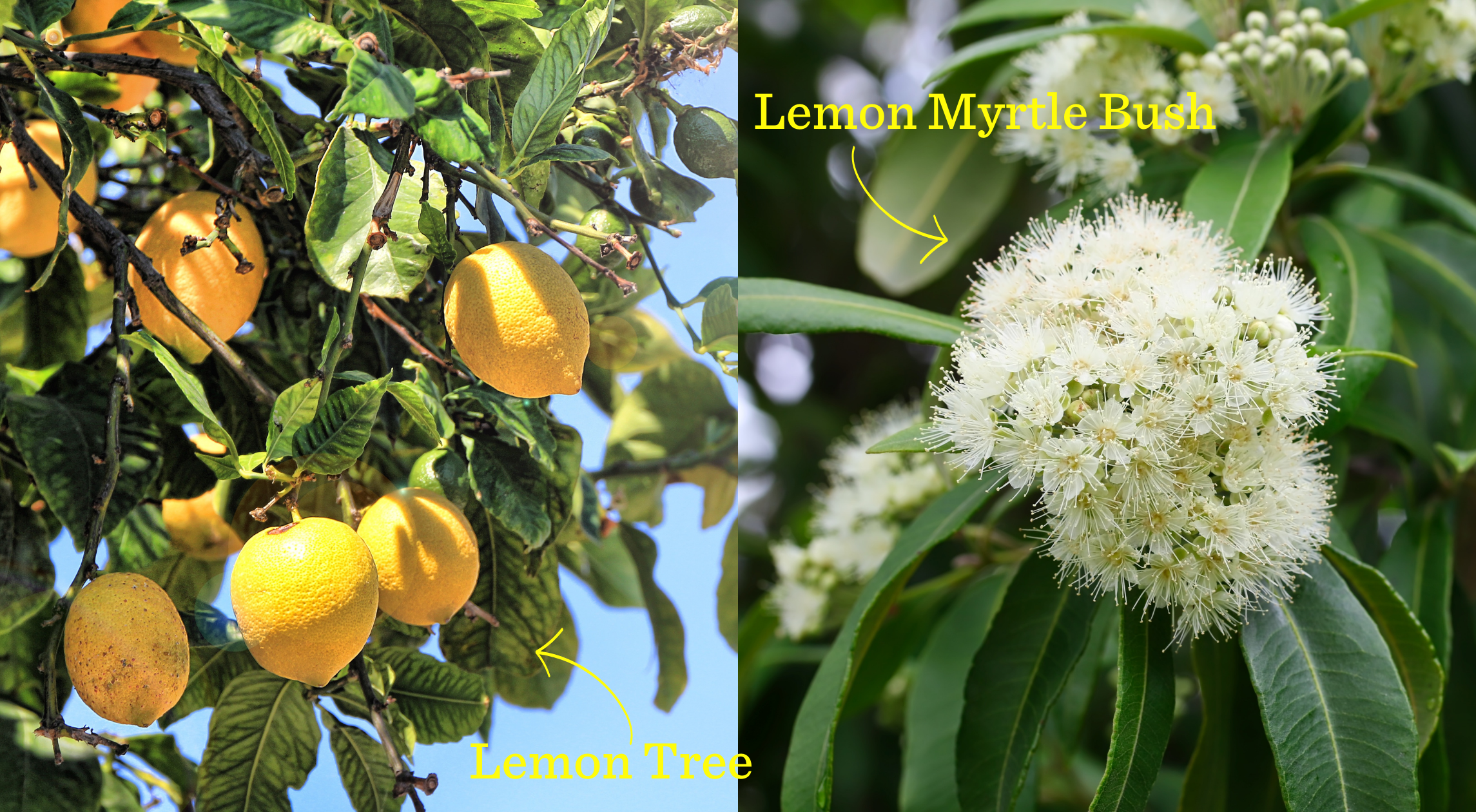Your Cart is Empty
FREE delivery for domestic orders over $70.00
FREE delivery for domestic orders over $70.00
Lemon and Lemon Myrtle. These two plants sound the same, perhaps like two different parts of the same tree, but that actually couldn’t be further from the truth! The lemon, which is a species of small evergreen tree, is known to be native to Asia, common in Northeast India and China. Lemon myrtle, however, is a native Australian shrub, naturally found in wetter coastal areas in northern New South Wales (where our oil comes from) and southern Queensland. This makes Lemon Myrtle a better plant for Australian wildlife, as it doesn’t disrupt naturally occurring biodiversity.
This is only the tip of the lemon-and-lemon-myrtle-differences iceberg, so let's look at some other factors that distinguish the two.

Difference in Plant
The lemon plant is an evergreen, growing about 3-6 metres high. Lemon tree leaves are oval in shape and can be used in cooking if not sprayed with toxins or chemicals during growth. Lemon trees need lots of sunlight and good drainage, and can start producing the edible lemon fruit after three years.
Lemon Myrtle can grow between 1-20 metres and is characterised by glossy oval leaves and little white flower bunches. These leaves, and even the seeds are edible! Lemon myrtle plants can be grown from seeds or regular cuttings, and take 2-8 weeks to germinate from cuttings, making it a much more efficient plant compared to the lemon tree.

Difference in Taste
Despite their similar names, there are actually some big taste differences between these two plants.
Lemons are tart and acidic, with a nice aroma of citrus, especially notable in lemon scented or flavoured products. If you let lemons sit for a few days, instead of eating them as fresh as can be, the acidity in them decreases through oxidation, resulting in a less sour taste.
In contrast, lemon myrtle taste (which is usually made from the leaves) has the highest amount of citral (>90%) of any plant, making it taste more like a lemon than actual lemons. Lemon myrtle also has no acidity, reducing the tart flavour and ensuring the lemony taste is sweet and refreshing.
Difference in Benefits
Both lemon and lemon myrtle have many benefits when consumed or applied in the right way.
For lemon, some of thebenefits include:
However, while all of these require consistent consumption to be effective, you need to be cautious of how much, and in what way, lemon juice is consumed. The acidity in it can wear down tooth enamel, so make sure you’re talking to your doctor and diluting lemon juice with water.
Somebenefits of lemon myrtle include:
Difference in Uses
Lemons, particularly the juice, have many great uses, fromculinary to medicinal. It is used to enhance flavour in drinks, meals and desserts, is a natural cleaner and stain remover, and cantreat high blood pressure, the common cold, and irregular menstruation.
Lemon myrtle has similaruses, first being used byIndigenous Australians in cooking, tea and medicinal remedies. It is especially beneficial for people with acne, dandruff, and other skin conditions that are caused by bacteria or fungi. It cleanses, reduces inflammation and naturally repairs skin, is used as a disinfectant in cleaners and aromatherapy, and can be used to treat abrasions on the skin, clear and soothe sinuses and sore throats, and so much more.

So you see, lemon and lemon myrtle are completely different, with different uses, and we can love both, use both, but obviously, you're here because like us, you're a massive lemon myrtle lover! Because of its extensive properties, lack of acidity and sustainable native presence, we use our products in multiple ways, every single day. How about you? What LMF product are you loving right now? Join our adventure over on Instagram or Facebook - the links are in the footer. Be part of our journey!
